As winter sets in, Italy’s ski resorts come alive with enthusiasts eager to enjoy unforgettable days filled with sport and nature. With the Milano-Cortina Winter Olympic Games just around the corner, Visit Italy has put together a region-by-region guide to the best places where to ski in Italy in 2026.
Here you’ll find the most modern resorts and the best-equipped runs for a truly memorable holiday on the snow. Start planning your Italian ski adventure now and discover the perfect winter escape!
Where to ski in Italy in 2026: destinations and tips for the year of the Winter Olympics
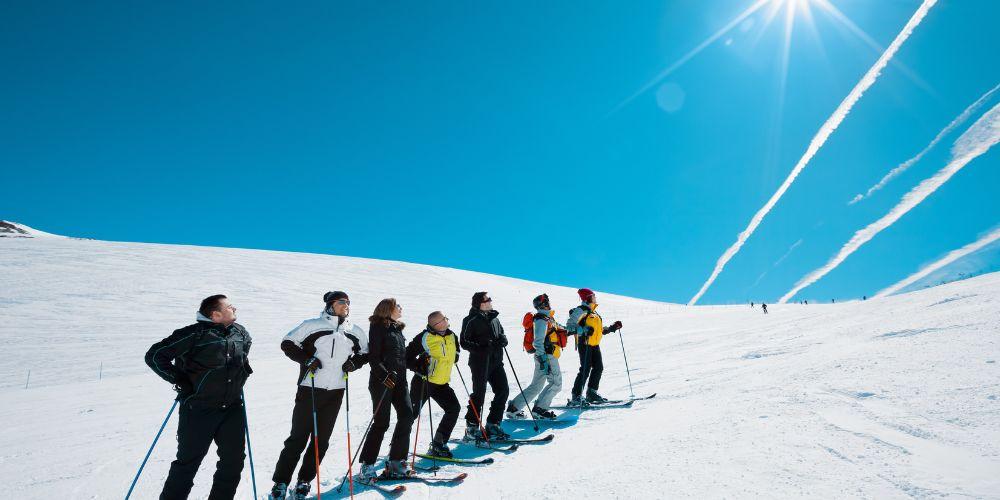
With the Winter Olympics coming up soon, this is a great moment to start planning your next ski holiday.
Where you decide to ski in Italy in 2026 will depend on a few important things, starting with the types of slopes each resort offers. Blue runs, wide and gentle, are ideal for families and beginners. Red runs, with gradients between 30% and 50%, call for a bit more technique. And then there are the black runs, reserved for seasoned skiers in search of a real challenge.
But it’s not just about the pistes. The quality of the lifts, opportunities for alternative winter sports, and the cost of a day pass – usually between €30 and €50 – all help shape the perfect experience.
Choosing wisely where to ski in Italy can turn a simple holiday into a full-blown winter adventure. Cult destinations such as Livigno are a case in point, thanks to world-class sports facilities and a wide range of activities that go far beyond skiing.
We’ve put together a region-by-region selection of the very best places to ski in Italy in 2026. Get ready for one of the most exciting and unforgettable experiences of your life. All in the Olympic year of Milano-Cortina.
21. Where to ski in Italy in 2026: Aosta Valley, among enchanted mountains and valleys
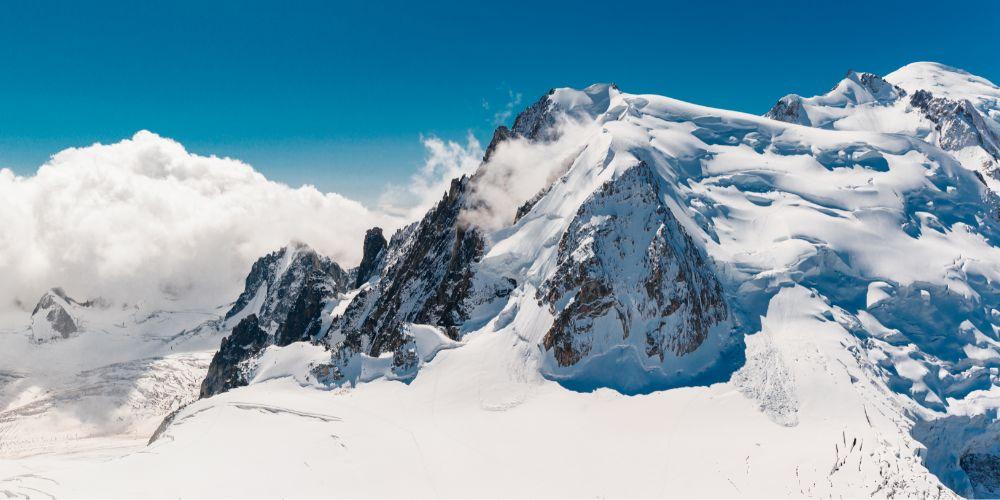
Where to ski in Valle d’Aosta:
- Mont Blanc
- The Matterhorn
- Monte Rosa & Gran Paradiso – Courmayeur
- Pila
- La Thuile with the Espace San Bernardo ski area
- Matterhorn Ski Paradise in Cervinia-Valtournenche
Skiing in the Aosta Valley is an unmissable experience, not least because the region is home to four of Italy’s highest peaks: Mont Blanc, the Matterhorn, Monte Rosa, and Gran Paradiso.
The choice of resorts is vast. Courmayeur is perhaps the most iconic, renowned for its cross-country ski trails and downhill pistes catering to every level.
Other highlights include Pila, La Thuile, home to the Espace San Bernardo, one of the area’s most important ski domains, and Valtournenche-Cervinia, with the Matterhorn Ski Paradise, the highest ski area in the Alps.
The Monterosa Ski network links no fewer than seven resorts, including Champoluc-Frachey, Gressoney-La-Trinité-Staffal, and Alagna Valsesia.
- Getting there – By car or direct bus from Turin to Courmayeur; Aosta is also served by regional trains.
- On the slopes – The region boasts around twenty ski resorts in total, from extensive domains to smaller, family-run ski areas that offer excellent value compared to the big names. Cross-country skiing centres add even more variety for snow lovers.
- Beyond the pistes – Relax at the Pré-Saint-Didier thermal baths, discover picture-postcard Alpine villages, or enjoy tastings of Fontina cheese and local wines.
- On the road to Milano-Cortina 2026 – From Aosta, it’s around 2 hours 30 by car to Milan for the ice events, or you can travel via regional trains (Aosta–Turin–Milan) with dedicated Olympic shuttles to reach the competition venues.
20. Where to ski in trentino, home to Italy’s coldest spot

Where to ski in Trentino:
- Selva di Val Gardena and Sellaronda (at the foot of the Dolomites)
- Madonna di Campiglio
- Val di Fassa
- Pontedilegno-Tonale
- Val di Fiemme
- Monte Bondone
- Canazei
- Campitello
- Pejo 3000
Trentino holds the record for Italy’s lowest temperature: Busa Fradusta has seen readings as low as -49.6°C! The region features over thirty high-quality resorts and more than 800 km of slopes, mainly divided between Dolomiti Superski and Skirama Dolomiti-Adamello Brenta. It's a paradise for skiers.
Madonna di Campiglio stands out as a must-visit, hosting World Cup events and serving as a reference point for slalom enthusiasts. State-of-the-art facilities and consortia constantly upgrading lifts and visitor services make Trentino a true paradise for skiers.
- Getting there – Easy access by car or train from Trento and Bolzano; Val di Sole is served by the Dolomiti Express to the slopes; direct connections by car or bus from the A22 motorway to resorts such as Folgarida, Marilleva, Pejo 3000, and Passo Tonale.
- On the slopes – Val di Fassa, Selva di Val Gardena, Sellaronda, Pontedilegno-Tonale, Val di Fiemme (a hub for cross-country skiing), Monte Bondone with illuminated night skiing, and Pejo 3000 with its 3,000-metre cable car.
- Beyond the pistes – Glamorous après-ski in Madonna di Campiglio; snowshoeing; alpine wellness centres for ultimate relaxation.
- On the road to Milano-Cortina 2026 – Val di Fiemme will host cross-country skiing, Nordic combined, and ski jumping events, reachable in around 1h 30 by car or bus from Trento.
19. Winter holidays in South Tyrol, between Italy and Austria
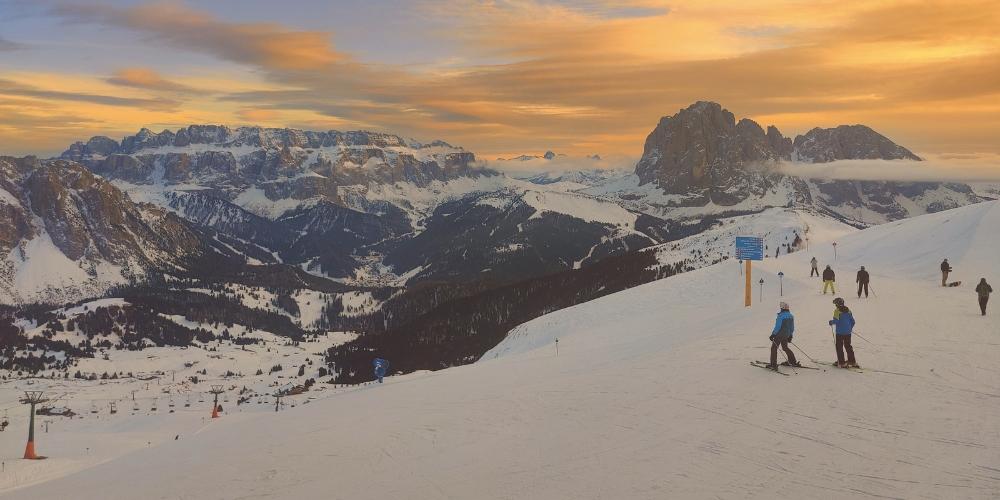
Where to ski in South Tyrol:
- Alta Badia
- Plan de Corones (Kronplatz)
- Val Gardena
- Ski Center Latemar in Obereggen
South Tyrol boasts dozens of ski resorts where you can strap on your skis and hit the slopes. Alta Badia is one of the region’s standout destinations: 140 km of wide pistes linking several resorts, all part of the famous Sellaronda circuit, with breathtaking views from Passo Gardena.
Plan de Corones (Kronplatz) is another great choice, with modern lifts, quick connections, and some tough black runs.
Val Gardena is ideal for families and beginners: one lift pass covers 12 resorts, and you can try the Longia, the region’s longest run at 10 km with a 1,300-metre drop.
Ski Center Latemar in Obereggen also has snowparks, areas for kids, freestyle courses, and evening activities.
- Getting there – Bus and train services from Bolzano to the resorts; Plan de Corones has a railway stop directly connected to the cable car.
- On the slopes – Medium- to large-sized resorts with pistes for all levels, snowparks and children’s areas. South Tyrol will host some events in preparation for the Milano-Cortina Winter Olympics.
- Beyond the pistes – Visit the Christmas markets in Brunico or Bressanone, sample local specialties like speck and canederli, or join guided snowshoe tours.
- On the road to Milano-Cortina 2026 – Antholz (Anterselva) will host the Olympic biathlon events. Shuttles will be available from parking areas and Valdaora Station to reach the competition site.
18. Where to Ski in Lombardy: Ride the Slopes in Italy’s Alpine Heartland
🥇 Visit Italy’s brand partnership
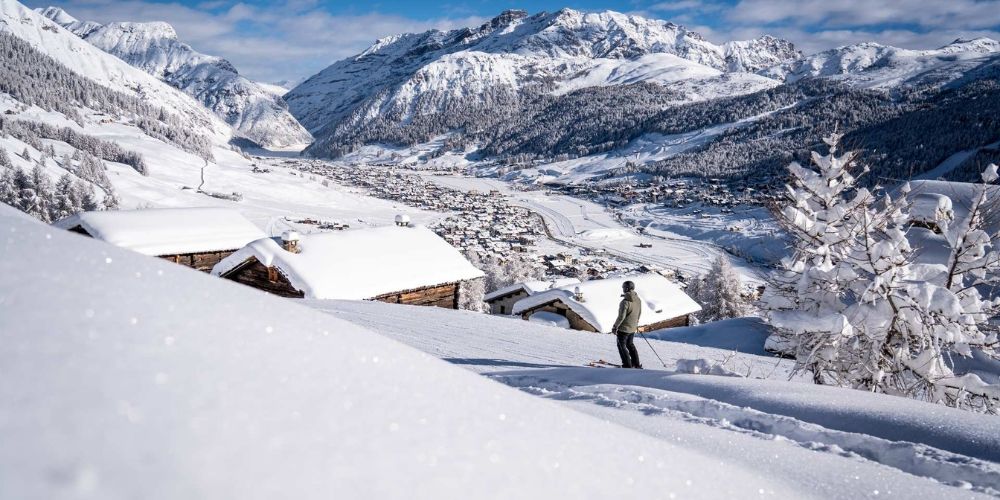
Where to ski in Lombardia:
- Livigno
- Bormio
- Pontedilegno-Tonale
High-altitude adventures await amid Lombardy’s stunning mountains.
Livigno is internationally acclaimed and was awarded Italy’s Best Customer Service 2024/2025 as a top ski resort.
Nestled in a sun-kissed valley with a mild climate, this Italian mountain gem offers slopes open from autumn through spring, a wealth of natural and cultural experiences year-round, and one of the finest lifestyle and food-and-wine panoramas in the Alps.
The skiable area spans 100 km², featuring 115 km of pistes: 29 blue, 37 red, and 12 black, served by 6 gondolas, 14 chairlifts, and 12 drag lifts. For freeride enthusiasts, a heliski service provides access to some of the most thrilling spots, while 30 km of cross-country trails add even more variety.
Bormio is famous for its remarkable vertical drop, with a 1,000-metre difference between its highest and lowest peaks.
Pontedilegno-Tonale boasts a modern snow-making system, 28 lifts, and a gondola connecting Pontedilegno to the summit of Passo Tonale in just a few minutes.
- Getting there – By train from Milan to Tirano, then by bus or rental car to Bormio and Livigno; the journey takes around 3–4 hours by car.
- On the slopes – Livigno is one of Italy’s highest (1,816 m) and sunniest resorts. Ski schools and experienced instructors help beginners get their first steps on the snow.
- Beyond the pistes – Livigno’s Carnival with costume ski parades; kayaking, paddleboarding, and boating at Lake Gallo; local delicacies by Latteria di Livigno; Alpine wellness at Aquagranda, one of Europe’s largest wellness centres, which also houses AQ1816, a state-of-the-art sports complex and Olympic training hub.
- On the road to Milano-Cortina 2026 – Alpine skiing and freestyle venues in Valtellina (Bormio and Livigno) are accessible from Milan via train and dedicated shuttles. Livigno, as host venue for Snowboard and Freestyle disciplines, will award 26 Olympic titles. Milan will host ice hockey and figure skating events.
More info on Livigno17. Piedmont: winter sports in the westernmost region of Italy
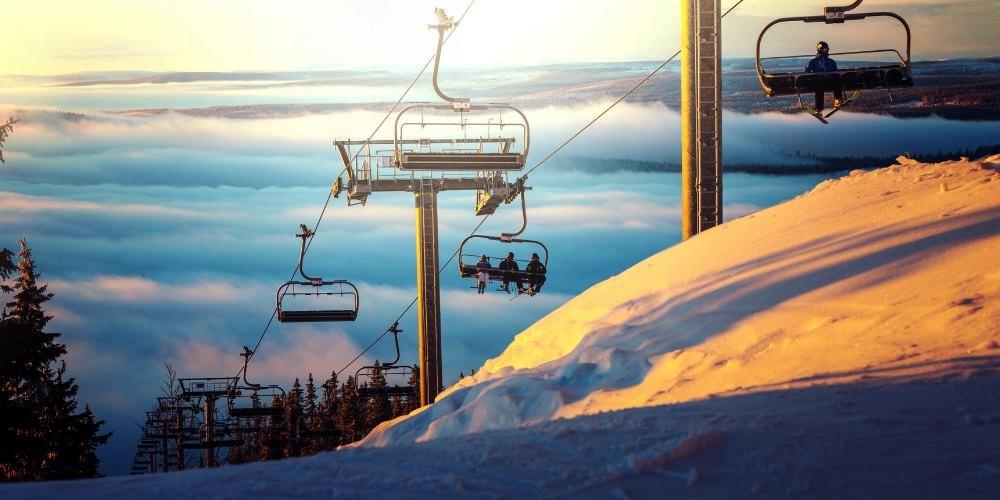
Where to ski in Italy: Piemonte
- Sestriere
- Bardonecchia
- Melezet Snowpark
Among the ski resorts in Piedmont, Sestriere stands out as the most famous and beloved. The area caters to skiers of all levels, with high-altitude black runs and gentle blue slopes for beginners, covering roughly 160 km in total, including a stunning illuminated piste for night skiing.
Bardonecchia, in the Val di Susa, offers 23 lifts and 100 km of pistes. From the town centre, a quick shuttle takes visitors to the Jafferau area, a haven for snowboarders who will find the Melezet Snowpark perfect for training and freestyle fun.
The Vialattea ski area spans around 400 km with modern lifts reaching up to 2,800 metres, attracting a high number of winter sports enthusiasts each year.
- Getting there – Easy access from Turin; buses and trains run to Oulx (upper Susa Valley) with connecting shuttles to the Vialattea resorts.
- On the slopes – Large ski areas such as Sestriere, Sauze d’Oulx and Pragelato offer pistes for all abilities, snowparks and cross-country trails, with some areas illuminated for night skiing.
- Beyond the pistes – San Michele Fair in Sampeyre; Christmas markets in Sestriere and Bardonecchia; guided snowshoe and snowmobile excursions.
- On the road to Milano-Cortina 2026 – High-speed trains from Turin reach Milan in around 1 hour; from there, continue by train to Venice and by bus or shuttle to Cortina. By car, the journey from Turin to Cortina takes roughly 5 hours.
16. Why skiing skiing in Liguria, where the sea is the big star
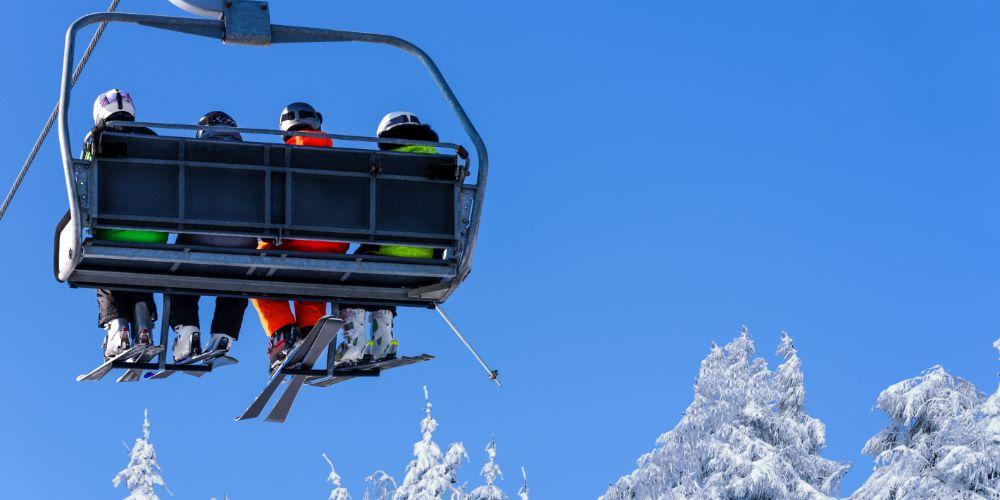
Where to ski in Liguria:
- Monesi di Triora
- Santo Stefano d’Aveto
In Liguria, skiing is possible at Monesi di Triora and Santo Stefano d’Aveto, resorts recently upgraded with new two-seater chairlifts and artificial snow systems. Visitors can also enjoy cross-country skiing, snowboarding, snowkiting, ice skating, biathlon, Nordic walking, and snowshoeing.
Monesi di Triora, in the province of Imperia, is the oldest ski resort in the region, dating back to the 1950s. Its 8 blue and red pistes cover 17 km, and a chairlift takes skiers up to Monte Saccarello, the highest peak in Liguria, reaching the statue of Christ the Redeemer.
At Santo Stefano d’Aveto, 20 km of slopes stretch across the Val d’Aveto, featuring a snowpark, two chairlifts to Monte Bue, a drag lift at Prato Cipolla, and a 2.5 km cross-country loop.
- Getting there – Around 1h 30 by car from Genoa to the resorts in the Savona hinterland; some locations are served by regional buses at weekends.
- On the slopes – Santo Stefano d’Aveto is ideal for skiing with children and family-friendly facilities.
- Beyond the pistes – Santo Stefano d’Aveto hosts one of the most charming Christmas markets in the region.
- On the road to Milano-Cortina 2026 – From Genoa, high-speed trains reach Milan in 1h 40, with direct connections via Olympic shuttles to Valtellina and Cortina.
15. Enjoy the slopes in Veneto
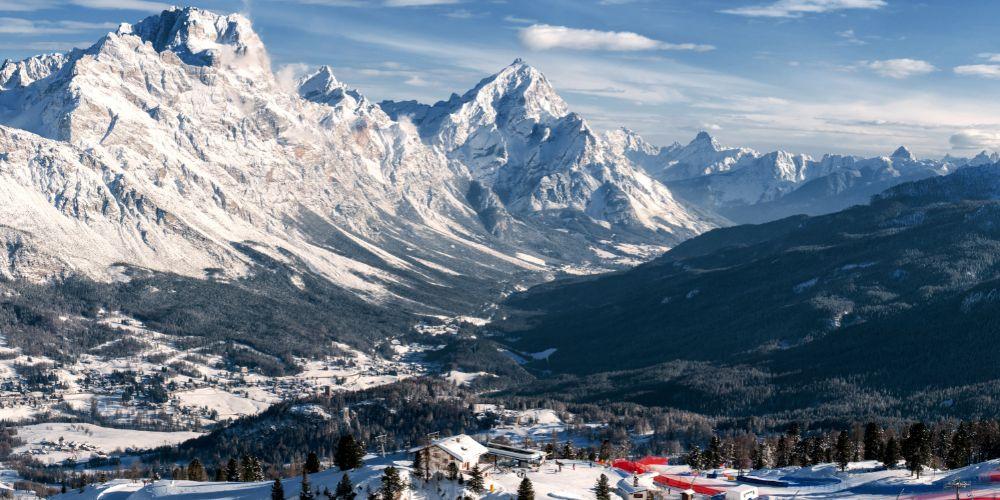
Where to ski in Italy for 2026: Veneto
- Cortina d’Ampezzo
- Dolomiti Superski
- Passo San Pellegrino
- Arabba in Marmolada
- Civetta at Selva di Cadore
- Ski Area Comelico at Padola
- San Vito di Cadore
- Alpe del Nevegal
- Monte Verena at Mezzaselva di Roana
Veneto, particularly the province of Belluno, is home to much of the Dolomite mountain range. Sport, nature, and culture: beyond the pistes, charming villages and local traditions enrich the experience.
The heart of skiing in Veneto is Cortina d’Ampezzo, part of the vast Dolomiti Superski area, renowned for the World Cup races and international flair, which has long attracted the rich and famous.
Veneto offers a wide selection of the best places to ski in Italy, including Passo San Pellegrino, Arabba in Marmolada, Civetta, and the Ski Area Comelico, all of which provide modern slopes and top-notch services.
Regional ski consortia connect multiple resorts, with snowparks, lifts, and large accommodation facilities.
- Getting there – Direct buses from Venice and Treviso to Cortina; around 2 hours by car via the A27.
- On the slopes – Cortina d’Ampezzo has over 120 km of pistes across Tofana, Faloria, and Cristallo, including World Cup courses and freeride areas.
- Beyond the pistes – Women’s Alpine Ski World Cup on Tofana’s slopes; shopping along Corso Italia; traditional dishes like casunziei and mountain cheeses.
- On the road to Milano-Cortina 2026 – Cortina will host key events including women’s alpine skiing, curling, and bobsleigh, with transport links fully upgraded for the Games.
14. Ski in Italy in 2026: resorts in Friuli Venezia Giulia
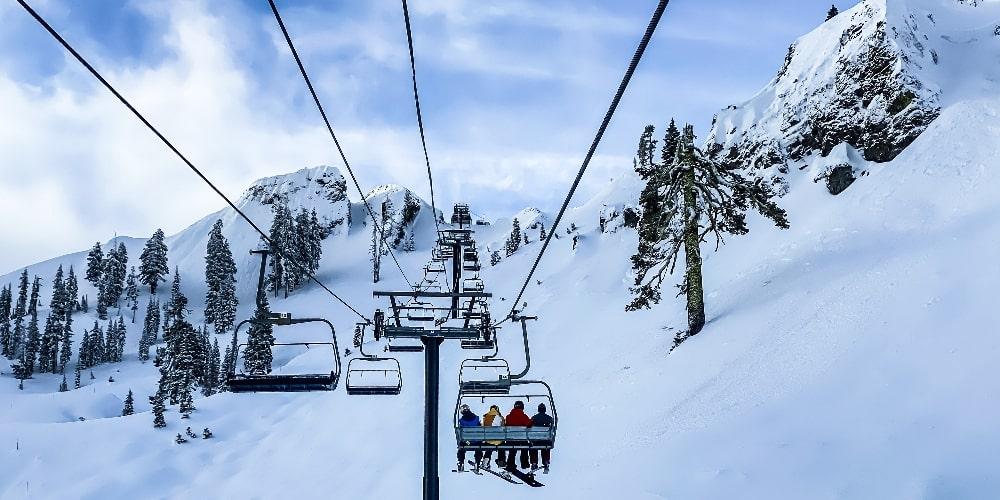
Where to ski in Friuli Venezia Giulia:
- Tarvisio
- Piancavallo
- Ravascletto-Zoncolan
Friuli Venezia Giulia, Italy’s eastern Alpine gateway, combines breathtaking landscapes with a rich mix of Austrian and Slovenian cultural influences.
Tarvisio is the region’s biggest and best-known ski area. It hosts women’s World Cup races and has 33 km of runs, including the impressive Prampero with its 1,000-metre drop. You can also try cross-country skiing, snowshoeing, or even a husky sled ride.
Piancavallo has 24 km of slopes between 1,200 and 1,800 meters. It’s a great choice for families, with beginner areas, fun zones, cross-country trails, and places to skate or try other winter activities.
Ravascletto-Zoncolan offers wide views from the Dolomites to the Julian Alps. There are 28 km of scenic slopes, plus snowcat rides and guided snowshoe tours.
- Getting there – Around 1h 30 by car from Udine to Tarvisio; regional bus and train connections available, with changes at Gemona or Pontebba.
- On the slopes – Tarvisio and Monte Lussari for all abilities; Sella Nevea and Zoncolan suit intermediate skiers and families; Piancavallo and Forni di Sopra for beginners and snowshoers.
- Beyond the pistes – Snowshoe hikes in the Friulian Dolomites Natural Park; Christmas markets in Tarvisio and Piancavallo.
- On the road to Milano-Cortina 2026 – From Tarvisio, about 4h 30 by car to Milan or Valtellina for ski events; by train 5–5.5 hours with changes at Udine and Venice, with possible dedicated Olympic shuttles to the competition venues.
13. Where to ski in Italy: in the mountains of Emilia Romagna
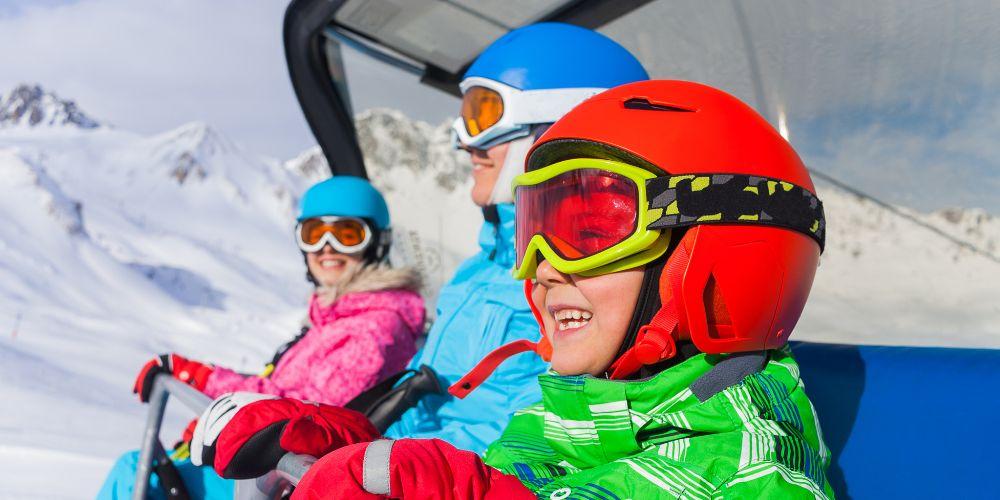
Where to ski in Emilia Romagna:
- Cimone – Montecreto
- Corno alle Scale – Lizzano in Belvedere
- Schia – Monte Caio
- Sant’Annapelago
- Febbio 2000 – Monte Cusna
- Cerreto Laghi
- Pratospilla
- Piane di Mocogno
- Pian del Falco – Sestola
- Ventasso Laghi
- Campigna – Monte Falco
Emilia Romagna, the Italian region celebrated for its cultural heritage and gastronomy, also offers spectacular opportunities for mountain and winter sports.
The most notable ski areas include Cimone-Montecreto, Corno alle Scale, Febbio 2000-Monte Cusna, Cerreto Laghi, Pian del Falco-Sestola, and Pratospilla, all of which feature modern slopes and breathtaking scenery.
You’ll easily find exceptional spots where to ski, enjoy open descents, or try every winter sport you can imagine.
Ski resorts with a wide range of services: state-of-the-art lifts and chairlifts, equipment rental, and hotels capable of hosting hundreds of visitors.
- Getting there – About 2h 30 by car from Milan to Sestola (Monte Cimone); around 1h 30 from Bologna to Corno alle Scale; 1h 30 from Parma to Cerreto Laghi.
- On the slopes – Monte Cimone offers over 50 km of pistes, the largest ski area in the region; Corno alle Scale features 36 km, including the famous Tomba 1 and 2; Cerreto Laghi has 28 km of slopes, with a snowpark and ice-skating track.
- Beyond the pistes – Snowshoe excursions at Lago Calamone; visits to the medieval villages of Sestola and Fanano.
- On the road to Milano-Cortina 2026 – From Sestola, around 2h 30 by car to Milan for ice events; from Bologna, direct train connections to Milan and Cortina, with dedicated Olympic shuttles.
12. Practice winter sports in Tuscany
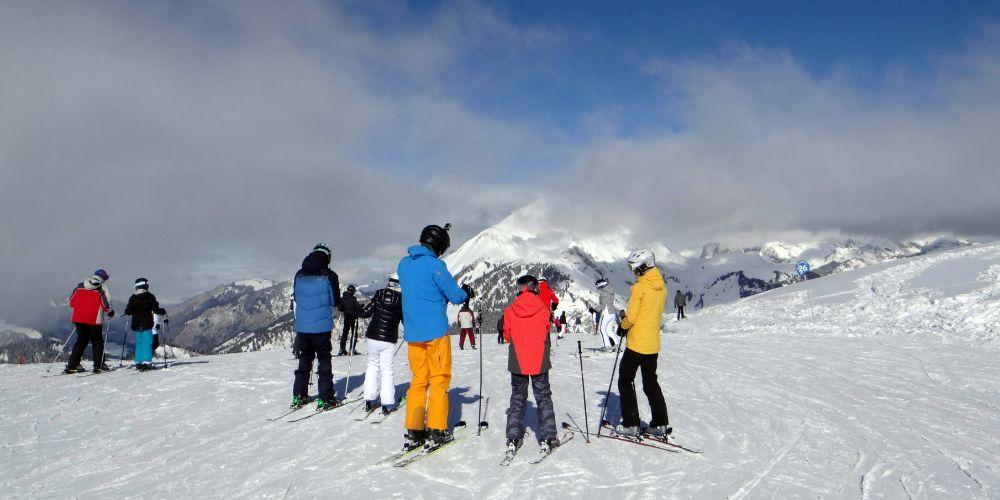
Where to ski in Tuscany:
- Abetone
- Cutigliano
- Doganaccia
- Garfagnana and Apuan Alps (Careggine, Passo delle Radici, Casone di Profecchia)
- Monte Amiata and Zum Zeri – Passo Due Santi
Beyond art, literature, and poetry, Tuscany also provides a comprehensive winter sports experience that make it one of the best places where to ski in Italy in 2026.
Abetone, Cutigliano-Doganaccia, Garfagnana and the Apuan Alps (Careggine, Passo delle Radici, Casone di Profecchia), Monte Amiata and the Zum Zeri–Passo Due Santi complex are among the best-known destinations.
All ski areas are part of consortia that guarantee efficient lifts, snowparks, hotels close to the slopes, rental services, and options suitable for both beginners and experts.
The pistes allow alpine skiing, downhill, and a wide range of winter sports, all set against a spectacular backdrop of panoramic views.
- Getting there – From Florence, about 1h 30–2h by car to Abetone; trains run to Pistoia, then local buses to the ski resorts.
- On the slopes – Abetone offers over 50 km of pistes for all levels; Monte Amiata features 10 km of family-friendly runs; Careggine provides 15 km of pistes with a snowpark.
- Beyond the pistes – Visits to the medieval villages of Cutigliano, Santa Fiora, and Careggine; Tuscan Christmas markets; the “Pinocchio sugli sci” race at Abetone at the end of the season; excursions in the Apuan Alps Park.
- On the road to Milano-Cortina 2026 – From Florence, about 2h by car to Milan; by train, around 2h with shuttle or bus connections to Olympic venues in Valtellina and Cortina.
11. Skiing in the Marche, homeland of great artists and Renaissance palaces

Where to ski in Le Marche:
- Frontignano
- Sarnano
- Bolognola
Le Marche, the only Italian region with a plural name and birthplace of Raphael and Leopardi, combines an extraordinary cultural heritage with plenty of opportunities for winter sports.
Among the main resorts to know is Frontignano, a ski area with eight easy and intermediate pistes, a snowpark, a recreation zone for children, and a sledge area.
On the Sibillini Mountains, the resort of Sarnano features pistes that can be enjoyed even after sunset, a dedicated snowboard area, nine ski lifts, and ski schools for children.
Finally, Bolognola, near a charming medieval village, is home to 6 km of pistes, ski tows and rental facilities, as well as certified slopes for slalom, super-G and giant slalom competitions for expert skiers.
- Getting there – From Ancona, ski areas in the Sibillini Mountains can be reached in around 2h by car; seasonal buses and shuttles connect Ancona and Fabriano train stations with the ski resorts.
- On the slopes – Ski in Frontignano di Ussita with pistes up to 2,000 metres, in Forca Canapine with around 8 km of runs, and at Monte Prata.
- Beyond the pistes – In winter, you can go snowshoeing on Monte Nerone, hike panoramic trails such as the Cresta del Monte Sibilla, or visit Lago di Pilato, one of the symbolic sites of the Sibillini National Park.
- On the road to Milano-Cortina 2026 – From Ancona, it takes about 3h by car or just over 3h by direct train to reach Milan; from Lombardy cities, dedicated buses and shuttles will connect to Olympic venues in Valtellina and Cortina.
10. Experience the joy of snow in Umbria
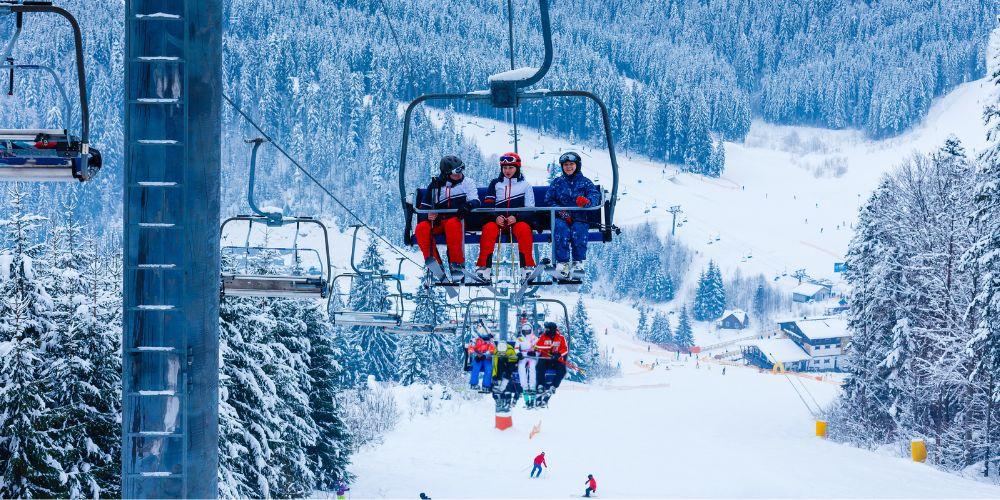
Where to ski in Umbria:
- Fondo Pian delle Macinare, Costacciaro
- Monte Cucco
- Fondo Valsorda, Gualdo Tadino
- Fondo Sibillini, Castelluccio di Norcia
Umbria is a great place to ski in Italy, and it’s easy to reach from many parts of the country.
Close to Perugia, there are two well-known ski centers. In Costacciaro, Fondo Pian delle Macinare is popular for cross-country skiing at the base of Monte Cucco, with beautiful beech forests that welcome visitors all year.
In Gualdo Tadino, less than 50 km from Perugia, Fondo Valsorda also focuses on cross-country skiing. It has three medium-difficulty circuits with about 30 metres of elevation change. You can also try ski touring and snowshoeing.
In Castelluccio di Norcia, Fondo Sibillini is the largest cross-country ski area in central and southern Italy, with 25 km of trails, from easy loops to more challenging routes.
- Getting there – From Perugia, the Monte Cucco and Forca Canapine areas can be reached in 1h30–2h by car; buses and shuttles connect Perugia and Foligno with the mountain resorts.
- On the slopes – At Forca Canapine, on the border with Marche and Lazio, pistes between 1,300 and 1,600 metres in altitude are also popular with beginners and families.
- Beyond the pistes – The Monti del Sole chairlift delivers breathtaking views and is a favourite spot for astronomy enthusiasts.
- On the road to Milano-Cortina 2026 – From Perugia, Milan can be reached in about 4h by car; by train, connections with a change in Florence take around 4h30, with onward travel by bus or shuttle to the Olympic venues.
9. Skiing in Italy amid the National Parks of Abruzzo
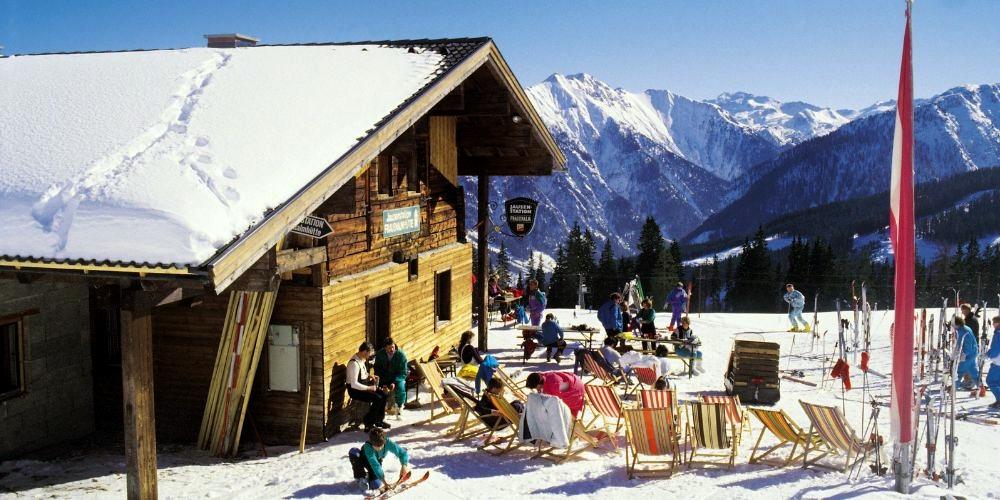
Where to ski in Abruzzo:
- Roccaraso
- Rivisondoli
- Campo Felice – Rocca di Cambio
- Campo Imperatore, Gran Sasso
- Monte Magnola, Ovindoli
- Pescasseroli
- Prati di Tivo
- Prato Selva
- Scanno and Passo Godi, Monte Rotondo
Abruzzo stands out as a top Italian destination for winter sports. Thanks to the Apennine mountains and their heavy snowfalls, the ski season here can easily rival that of the Alps.
Efficient facilities, well-connected resorts, and long seasons lasting from November to May attract skiers from all over Europe.
There are many resorts to choose from: Roccaraso, Rivisondoli, Campo Felice, Campo Imperatore on Gran Sasso, Ovindoli–Monte Magnola, Pescasseroli, Prati di Tivo, Prato Selva, Scanno, and Passo Godi.
Skisafari options enable visitors to ski across several nearby complexes with a single pass.
The largest ski area is Roccaraso, part of the Alto Sangro Skipass , which also covers Monte Pratello, Pescocostanzo, and Barrea: more than 150 km of downhill slopes and 60 km for cross-country skiing.
- Getting there – From Rome, it takes around 1h30 to reach Ovindoli and Campo Felice; from Pescara, about 2h to Roccaraso. Direct buses connect Rome with the main ski areas.
- On the slopes – Roccaraso, with more than 100 km of pistes, is the largest ski centre in central and southern Italy.
- Beyond the pistes – Snowshoeing in the Abruzzo National Park; the traditional Farchie Festival in Fara Filiorum Petri in January.
- On the road to Milano-Cortina 2026 – From Pescara it’s about 5h by train with a change in Bologna, or 6h by car to Milan. High-speed trains from Rome provide faster access to the Olympic venues.
8. How to ski in Lazio around the capital city
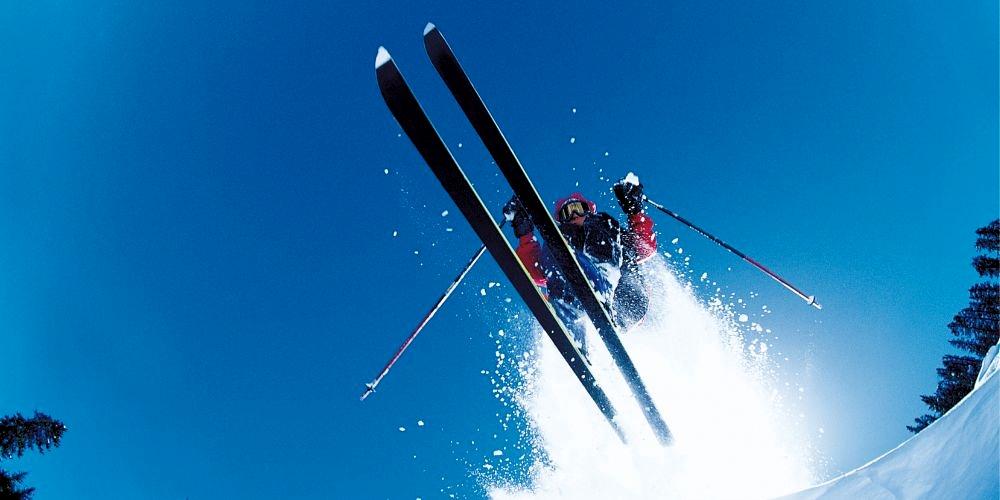
Where to ski in Lazio:
- Monte Livata
- Monte Terminillo
- Campocatino
- Campo Staffi
If you’re staying in or around Rome and don’t have the chance to travel further afield for your winter holiday, you’ll still find plenty of options for skiing in the Lazio region.
One of the most popular destinations is Monte Livata, in the Monti Simbruini Park. Pistes for all abilities, a snowpark, and cross-country circuits about 90 minutes from Rome.
At Monte Terminillo, 100 km from the capital, the slopes rise above 2,000 metres with spectacular landscapes for both skiing and snowshoeing.
In the Monti Ernici, Campocatino is ideal for ski mountaineering, freeride, and ice skating, while in the province of Frosinone, Campo Staffi lies within the Apennine Nature Park and features cross-country trails, several lifts, and eight pistes of varying difficulty.
- Getting there – From Rome, it takes around 1h30–2h by car to reach Terminillo and Campo Staffi; regional buses connect the capital with Rieti and Filettino.
- On the slopes – Terminillo has 40 km of pistes ranging from 1,500 to 2,100 metres in altitude; Campo Staffi offers runs for both beginners and more experienced skiers.
- Beyond the pistes – Snowshoe excursions on Monte Terminillo; visits to the mountain villages of Leonessa and Filettino.
- On the road to Milano-Cortina 2026 – From Rome, high-speed trains reach Milan in about 3h, providing fast connections to the Olympic venues in Valtellina and Cortina.
7. Where to ski in Molise, land of truffles and movie scenery
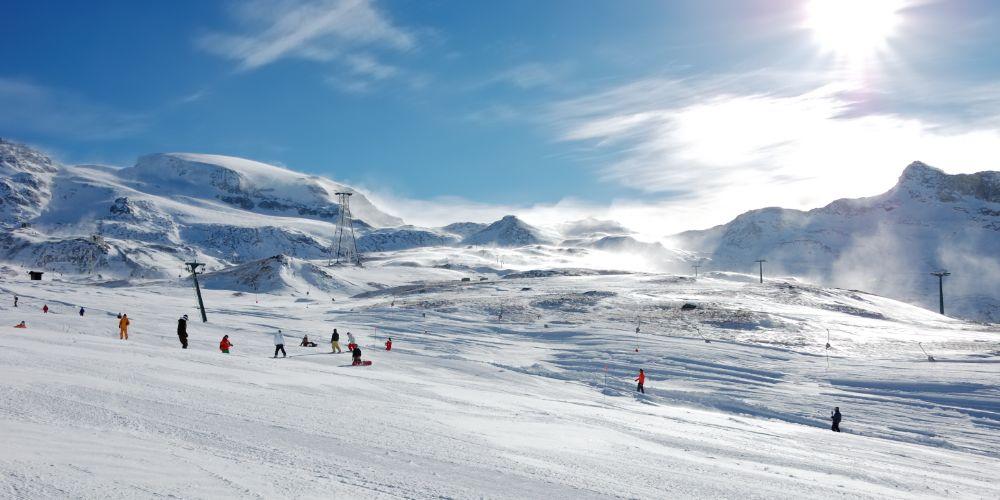
Where to ski in Molise:
- Capracotta (Isernia)
- Monte Matese: Campitello Matese
Choosing Molise for your winter holiday lets you explore one of Italy’s lesser-known regions, where snow-covered mountains meet medieval castles, the distinctive aroma of white truffles, cinematic landscapes, and excellent local cuisine.
The main ski areas – Capracotta in Isernia and Campitello on Monte Matese – feature modern lifts, well-equipped facilities, and hotels conveniently located near the slopes.
Visitors can enjoy alpine and cross-country skiing, snowboarding, snowkiting, ice skating, biathlon, bobsleigh, curling, ice hockey, sledging, ski jumping, Nordic combined, and freestyle skiing.
- Getting there – From Campobasso, both Campitello Matese and Capracotta are reachable in about 1h by car; bus services also connect Isernia and Campobasso with the ski resorts.
- On the slopes – Campitello Matese boasts 40 km of modern pistes, while Capracotta is famed for its cross-country trails, spanning over 40 km.
- Beyond the pistes – Explore the Matese mountains on snowshoe hikes, or visit the charming village of Capracotta for a taste of local culture and cuisine.
- On the road to Milano-Cortina 2026 – Trains from Campobasso link with Rome and Milan in roughly 6 hours, making the Olympic venues accessible from Molise.
6. Find out where to ski in Campania, just a few miles from Naples
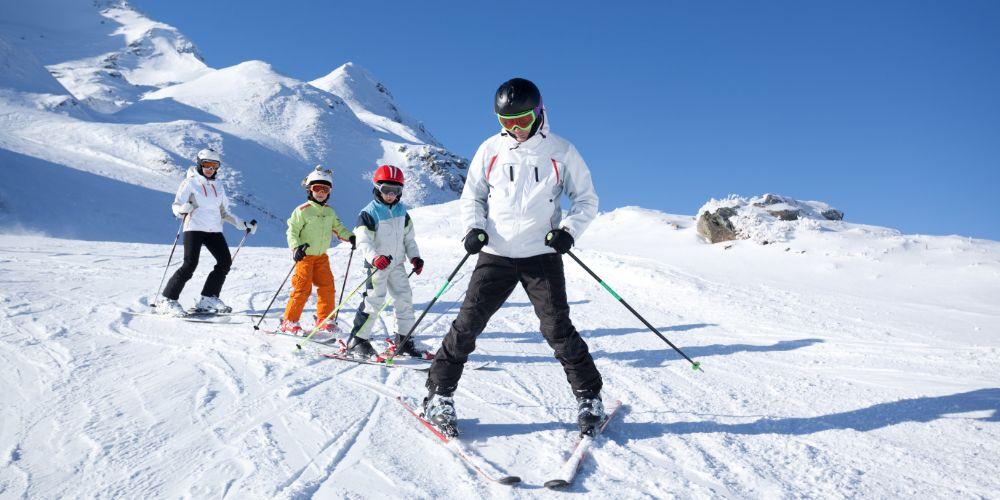
Where to ski in Campania:
- Campitello Matese
- Monte Matese
- Roccaraso
While snow-covered mountains may not be the first image that comes to mind when you think of Naples and its surroundings, the nearby Apennines provide several great options for a winter escape without venturing too far.
Campitello Matese (just over the border in Molise) is reachable in around two hours from Naples. The resort is made up of 40 km of pistes served by seven lifts and includes the so-called Cristallo Trail, which meets international standards and can host official World Cup events.
There are also mogul runs, off-piste routes, and a snowpark catering to various skill levels.
Monte Matese offers additional opportunities, while Roccaraso in Abruzzo is a favourite among locals: its extensive ski infrastructure provides a full alpine experience comparable to that of the Alps.
- Getting there – By car, Monte Matese is about 2h from Naples; buses connect Caserta and Benevento with the resort areas.
- On the slopes – Smaller ski areas in the Matese mountains are ideal for families and beginner skiers, with gentle runs and scenic surroundings.
- Beyond the pistes – Hike through the Matese forests; explore the charming villages of Cusano Mutri and Piedimonte Matese.
- On the road to Milano-Cortina 2026 – High-speed trains from Naples reach Milan in around 4h, with onward shuttle connections to the Olympic venues.
5. Go to the snow in Basilicata
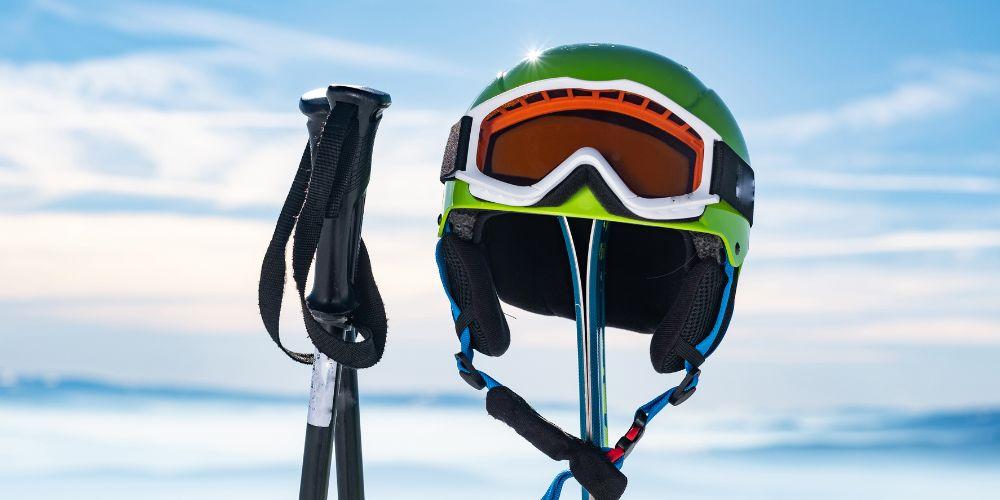
Where to ski in Basilicata:
- Pollino Massif
- Sellata-Pierfaone-Arioso (Abriola and Sasso di Castalda)
- Monte Volturino (Calvello, Marsicovetere)
- Montagna Grande in Viggiano
- Sirino
The Lucanian Apennines rise above 2,000 metres, ensuring a reliable snow cover for much of the season in Basilicata, particularly in the Pollino Massif, where winter tourism remains active for several months each year.
The main ski centres: Sellata-Pierfaone-Arioso, Monte Volturino, Montagna Grande di Viggiano, Sirino, and Pollino. Activities range from alpine and cross-country skiing to Nordic walking, sledging, bobsleigh, and snowshoeing.
On Monte Sirino (Potenza), pistes descend towards Lago Laudemio in a fantastic natural scenery. Around Lagonegro and Lauria, visitors choose between alpine skiing, cross-country trails, and snowshoe hikes through the forests.
- Getting there – From Potenza, it takes about 1h by car to reach Monte Sirino and Montagna Grande di Viggiano; local buses connect neighbouring towns.
- On the slopes – Monte Sirino features 10 km of pistes reaching 1,900 metres; Montagna Grande in Viggiano has shorter but scenic runs.
- Beyond the pistes – Snowshoe excursions in the Lucanian Apennines National Park; visits to the towns of Lagonegro and Lauria.
- On the road to Milano-Cortina 2026 – From Potenza, high-speed trains via Naples and Rome take around 8h to Milan, or 9h by car.
4. Where to ski in Apulia in 2026
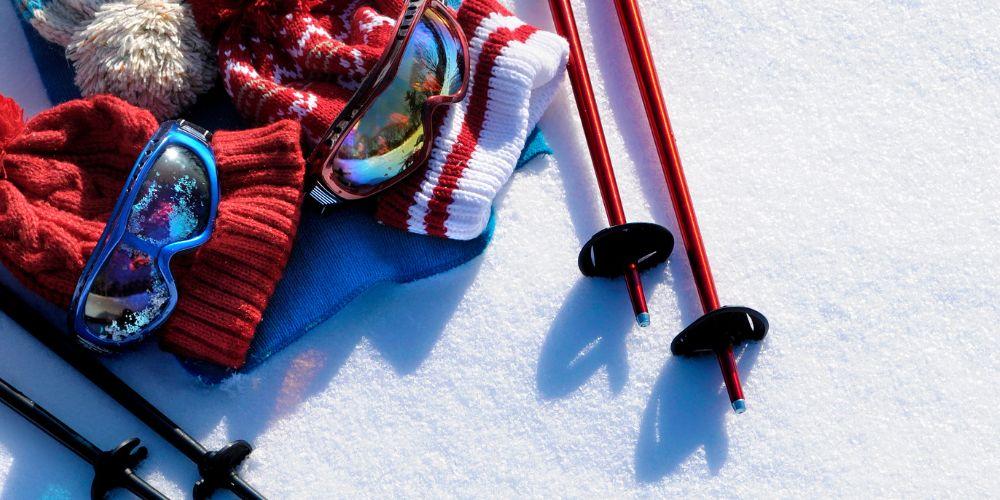
Where to ski in Puglia:
- Sellata – Pierfaone (Basilicata)
- Camigliatello Silano (Calabria)
- Campitello Matese (Molise)
Puglia may not be renowned for snow, but the region has several spots for enjoying fun “white” days, even though there are no ski resorts in the region.
Monte Sant’Angelo, a hilltop village on the Gargano slopes, and Castel del Monte in Andria have a magical winter atmosphere when snowfall paints the landscape white.
To go skiing, you’ll need to head to the neighboring regions and visit places such as the Sellata–Pierfaone ski resort in Basilicata or Camigliatello Silano in Calabria, places that combine winter sports with rich local traditions.
- Getting there – Camigliatello Silano is around 3h40 by car from Bari. Sellata–Pierfaone (Abriola, Potenza) is around a 3-hour and 20-minute drive from Bari, or you can take a train to Potenza and then continue by bus or car to the ski area.
- On the slopes – Camigliatello Silano features 4.3 km of pistes, reaching a maximum altitude of 1,785 m. Monte Volturino offers 2.2 km of runs with a peak elevation of 1,826 m.
- Beyond the pistes – Cross-country skiing and snowshoeing in the Sila National Park; sledging and snow tubing for families and beginners.
- On the road to Milano-Cortina 2026 – From Bari, direct trains reach Milan or Cortina in around 7h. Alternatively, flights from Bari to Milan provide a quicker route to the Olympic venues.
3. Where to ski above the sea in Calabria
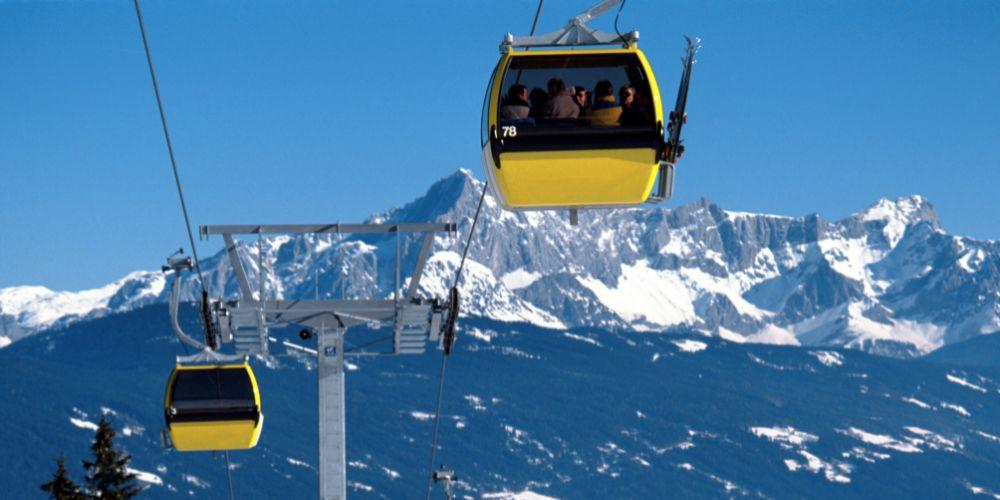
Where to ski in Calabria:
- Palumbosila
- Camigliatello Silano
- Monte Curcio
- Gambarie d’Aspromonte
- Monte Scirocco
Calabria is blessed with peaks and mountain ranges. The Apennines stretch across the Sila plateau, traverse the Reventino and Mancuso mountains in the Serre, and reach the Aspromonte massif.
Palumbosila stands out among the best places to ski in Calabria with illuminated pistes for night skiing, bobsleigh tracks, ice-skating rinks, and guided excursions on foot or by snowmobile.
Camigliatello Silano features some of the most efficient facilities in the Sila region, with the nearby Rifugio del Tasso providing access to high-altitude lifts leading to Monte Curcio and its long blue and red slopes for expert skiers.
At Gambarie d’Aspromonte, skiing comes with breathtaking views of the sea, looking out towards the Strait of Messina on one side and the Calabrian coast on the other.
- Getting there – Camigliatello Silano is about 1h30 by car from Cosenza. Monte Volturino is roughly 2h by car from Potenza.
- On the slopes – Palumbosila offers 2 km of scenic runs with the option of evening skiing.
- Beyond the pistes – Accommodation options often include wellness facilities and high-quality dining experiences.
- On the road to Milano-Cortina 2026 – From Cosenza, trains to Milan take approximately 7h, with onward connections by train or bus to the Olympic venues.
2. Where to ski in Sicily: snow on a volcano
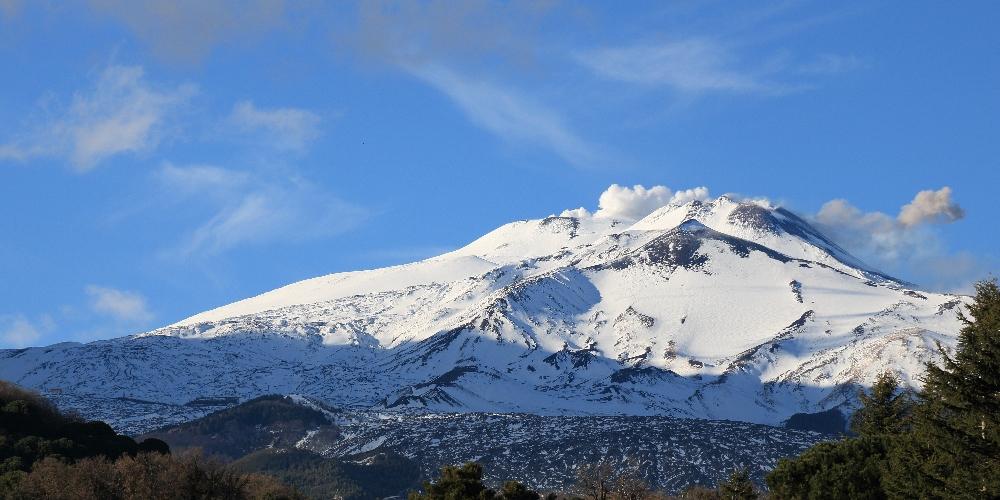
Where to ski in Sicily:
- Etna Nord – Piano Provenzano
- Etna Sud – Nicolosi
- Piano Battaglia
Winter sports under Sicily’s bright winter sun. The island has three ski centres, two on Mount Etna and one in the Madonie Mountains.
The Etna Sud ski area is situated in Nicolosi, while the Etna Nord – Piano Provenzano centre is located in Linguaglossa.
On the opposite side of the island, a third resort near Palermo, Piano Battaglia, is a smaller, lower-altitude facility for gentle skiing, snowboarding, and safe sledding.
- Getting there – Etna Sud at Nicolosi is about 1 hour by car from Catania. Etna Nord – Piano Provenzano in Linguaglossa can be reached in roughly 1h30 by car from Catania.
- On the slopes – Etna Sud offers 6.3 km of pistes served by five lifts, reaching a maximum altitude of 2,604 m. Etna Nord features 10.3 km of runs with a top elevation of 2,336 m.
- Beyond the pistes – Explore the Etna Park; visit the cities of Catania and Taormina; enjoy local culinary tours.
- On the road to Milano-Cortina 2026 – Direct flights from Catania to Milan provide easy access to the Olympic venues.
Take part to an unmissable tour on Mount Etna1. Skiing in Sardinia
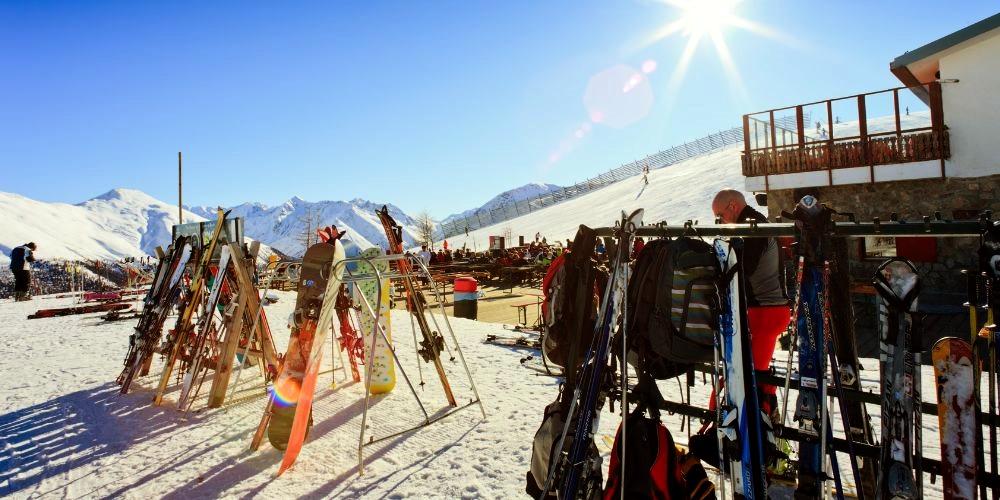
Where to ski in Sardinia:
- Monte Spada
- Bruncu Spina – Fonni
- S’Arena
- Separadorgiu
Sardinia can pleasantly surprise winter sports enthusiasts with its high-altitude terrain and fresh snow. The main ski areas on the island are Monte Spada, Bruncu Spina, S’Arena, and Separadorgiu.
In Fonni, on Bruncu Spina, you’ll find two lifts and a skilift capable of transporting up to 800 people. Separadorgiu features a 1 km run that lets you speed down amidst the vegetation.
Monte Spada hosts a small private ski station, ideal for beginners and families with children. At S’Arena, the ski centre also includes a farmhouse-style agriturismo.
- Getting there – The main ski area is in the Gennargentu National Park, near Fonni, roughly 1 hour by car from Nuoro.
- On the slopes – Fonni’s ski area is the largest in Sardinia, with three runs totalling 3 km.
- Beyond the pistes – Snowkiting, ice-skating, and horse-drawn sleigh rides are available at S’Arena.
- On the road to Milano-Cortina 2026 – Fly from Cagliari to Milan, then continue by train, car, or shuttle to reach the Olympic venues.
When to ski in Italy: a few tips
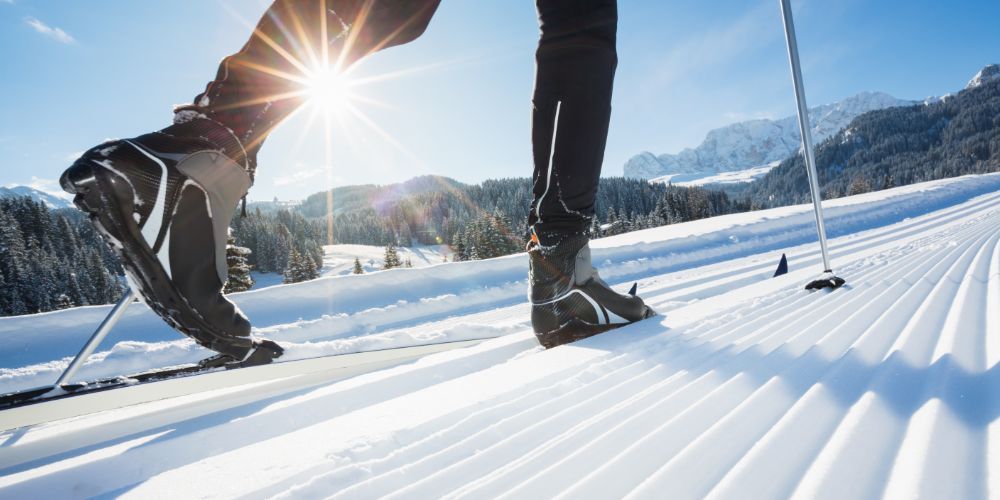
After exploring the best places to ski in Italy in 2026, it’s time to narrow down your search. How? By checking our regional guides (linked throughout the article), which help pinpoint the ideal destination. If you’re travelling with children, for example, they highlight resorts with gentle slopes, ski schools, and recreational areas.
As for the best time to hit the slopes, the winter months and the early part of the year are ideal, although some resorts have snow as early as October and it lasts into late spring.
All year round, destinations like Livigno remain irresistible for mountain lovers, who appreciate not only the pistes and state-of-the-art lifts but also the top-quality services that guarantee a complete high-altitude experience.
If you’re looking for budget-friendly options, keep an eye out for low-season deals, before Christmas and after March. Additionally, regions like Friuli Venezia Giulia and Abruzzo offer well-equipped resorts at reasonable prices.
For detailed planning, we recommend consulting a map of Italy’s ski areas. This will help you identify the slopes best suited to your level and check that the facilities meet your specific needs.
Where to ski in Italy: overview of the destinations
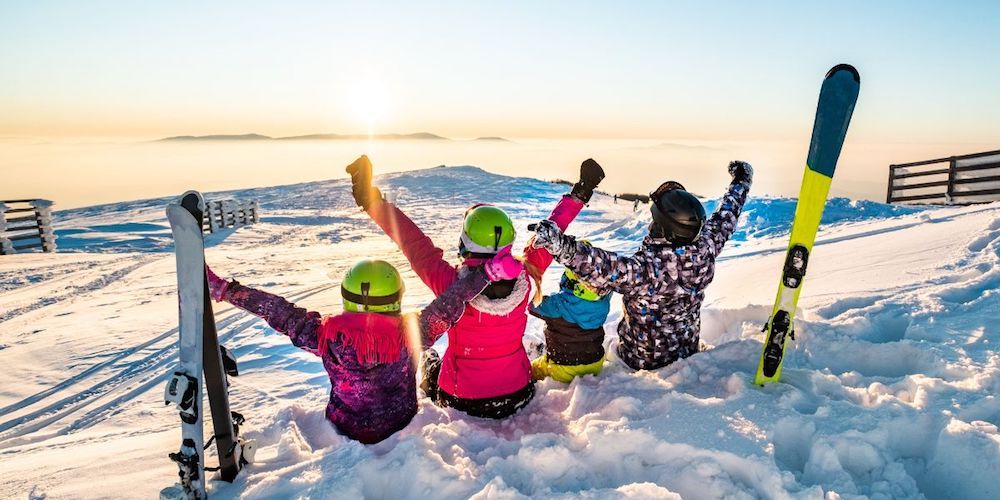
To wrap up, here’s a handy overview of the top spots to remember when planning your snow holiday. Visit Italy wishes you a truly magical and unforgettable experience among Italy’s most breathtaking peaks!
· Where to ski in Italy: Aosta Valley
- Mont Blanc,
- Matterhorn,
- Monte Rosa,
- Gran Paradiso,
- Courmayeur,
- Pila,
- La Thuile with Espace San Bernardo,
- Matterhorn Ski Paradise in Cervinia-Valtournenche.
· Where to ski in Italy: Trentino
- Madonna di Campiglio,
- Val di Fassa,
- Selva di Val Gardena and Sellaronda (at the foot of the Dolomites),
- Pontedilegno-Tonale,
- Val di Fiemme,
- Monte Bondone,
- Canazei,
- Campitello,
- Pejo 3000.
· Where to ski in Italy: South Tyrol
- Alta Badia,
- Plan de Corones (Kronplatz),
- Val Gardena,
- Ski Center Latemar in Obereggen.
· Where to ski in Italy: Piedmont
- Sestriere,
- Bardonecchia,
- Snowpark of Melezet.
· Where to ski in Italy: Liguria
- Monesi di Triora,
- Santo Stefano d'Aveto.
· Where to ski in Italy: Lombardy
- Livigno,
- Bormio,
- Pontedilegno-Tonale.
· Where to ski in Italy: Friuli Venezia Giulia
- Tarvisio,
- Piancavallo,
- Ravascletto-Zoncolan.
· Where to ski in Italy: Veneto
- Cortina d'Ampezzo,
- Dolomiti Superski area,
- Passo San Pellegrino,
- Arabba in Marmolada,
- Civetta in Selva di Cadore,
- Comelico Ski Area in Padola,
- San Vito di Cadore,
- Alpe del Nevegal
- Monte Verena in Mezzaselva di Roana.
· Where to ski in Italy: Emilia Romagna
- Cimone - Montecreto,
- Corno alle Scale - Lizzano in Belvedere,
- Schia - Monte Caio,
- Sant'Annapelago,
- Febbio 2000 - Monte Cusna,
- Cerreto Laghi,
- Pratospilla,
- Piane di Mocogno,
- Pian del Falco - Sestola,
- Ventasso Laghi,
- Campigna - Monte Falco.
· Where to ski in Italy: Tuscany
- Abetone,
- Cutigliano - Doganaccia,
- Garfagnana and Apuan Alps (Careggine locations, Passo delle Radici, Casone di Profecchia),
- Mount Amiata and the Zum Zeri - Passo Due Santi complex.
· Where to ski in Italy: Abruzzo
- Roccaraso,
- Rivisondoli,
- Campo Felice - Rocca di Cambio,
- Campo Imperatore in the Gran Sasso,
- Monte Magnola in Ovindoli,
- Pescasseroli,
- Prati di Tivo,
- Prato Selva,
- Scanno and the Godi Pass on Monte Rotondo.
· Where to ski in Italy: Marche
- Frontignano,
- Sarnano,
- Bolognola.
· Where to ski in Italy: Molise
- Capracotta (Isernia),
- Monte Matese: Campitello Matese
· Where to ski in Italy: Lazio
- Mount Livata,
- Mount Terminillo,
- Campocatino,
- Campo Staffi.
· Where to ski in Italy: Campania
- Campitello Matese,
- Monte Matese,
- Roccaraso.
· Where to ski in Italy: Umbria
- Fondo Pian delle Macinare in Costacciaro,
- Monte Cucco,
- Fondo Valsorda in Gualdo Tadino,
- Fondo Sibillini in Castelluccio di Norcia.
· Where to ski in Italy: Basilicata
- Pollino massif,
- Sellata-Pierfaone-Arioso in the areas of Abriola and Sasso di Castalda,
- Monte Volturino (Calvello, Marsicovetere),
- Montagna Grande in Viggiano,
- Sirino.
· Where to ski in Italy: Apulia
- Sellata – Pierfaone (Basilicata),
- Camigliatello Silano (Calabria),
- Campitello Matese (Molise).
· Where to ski in Italy: Calabria
- Palumbosila,
- Camigliatello Silano,
- Monte Curcio,
- Gambarie d'Aspromonte,
- Monte Scirocco.
· Where to ski in Italy: Sicily
- Etna Nord - Piano Provenzano,
- Etna Sud - Nicolosi,
- Piano Battaglia-
· Where to ski in Sardinia
- Campania Monte Spada,
- Bruncu Spina in Fonni,
- S'Arena,
- Separadorgiu.
About the author
Written on 02/01/2023

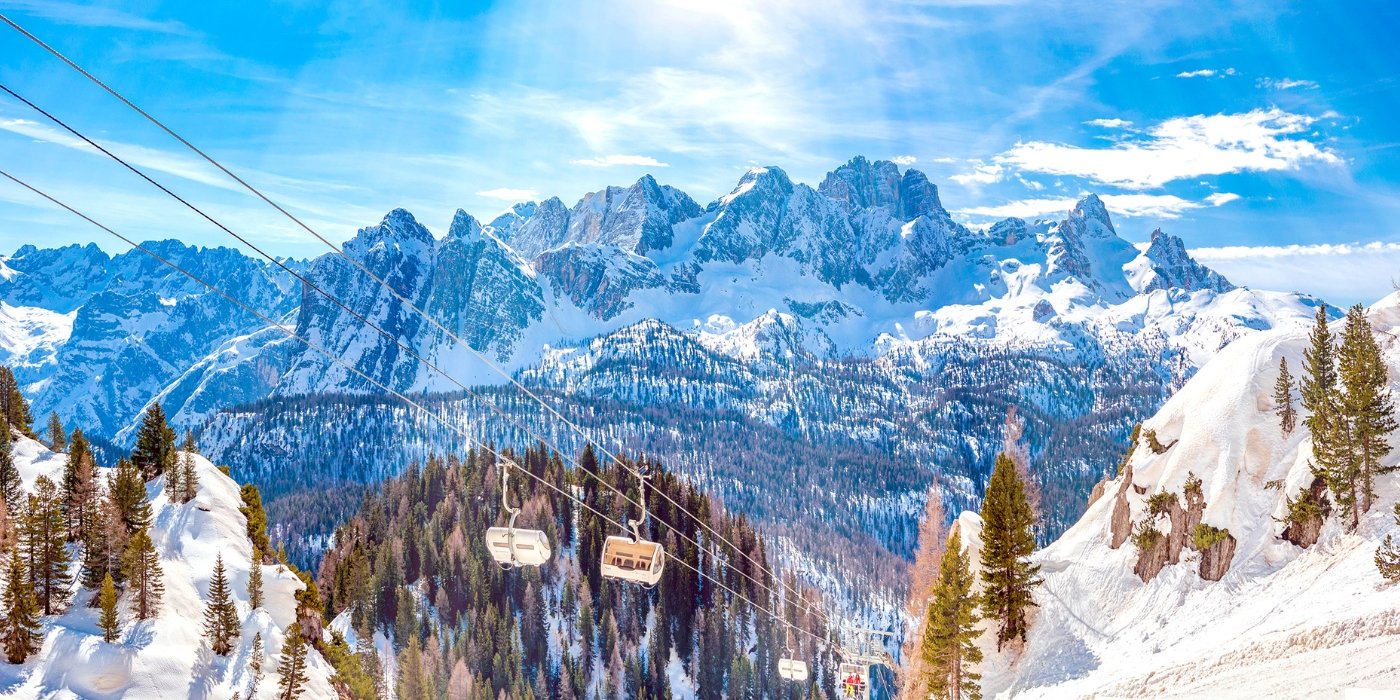

Francesco Vinci
Have you picked your winter escape? Here’s Visit Italy’s guide to the top ski destinations in Italy for 2026.